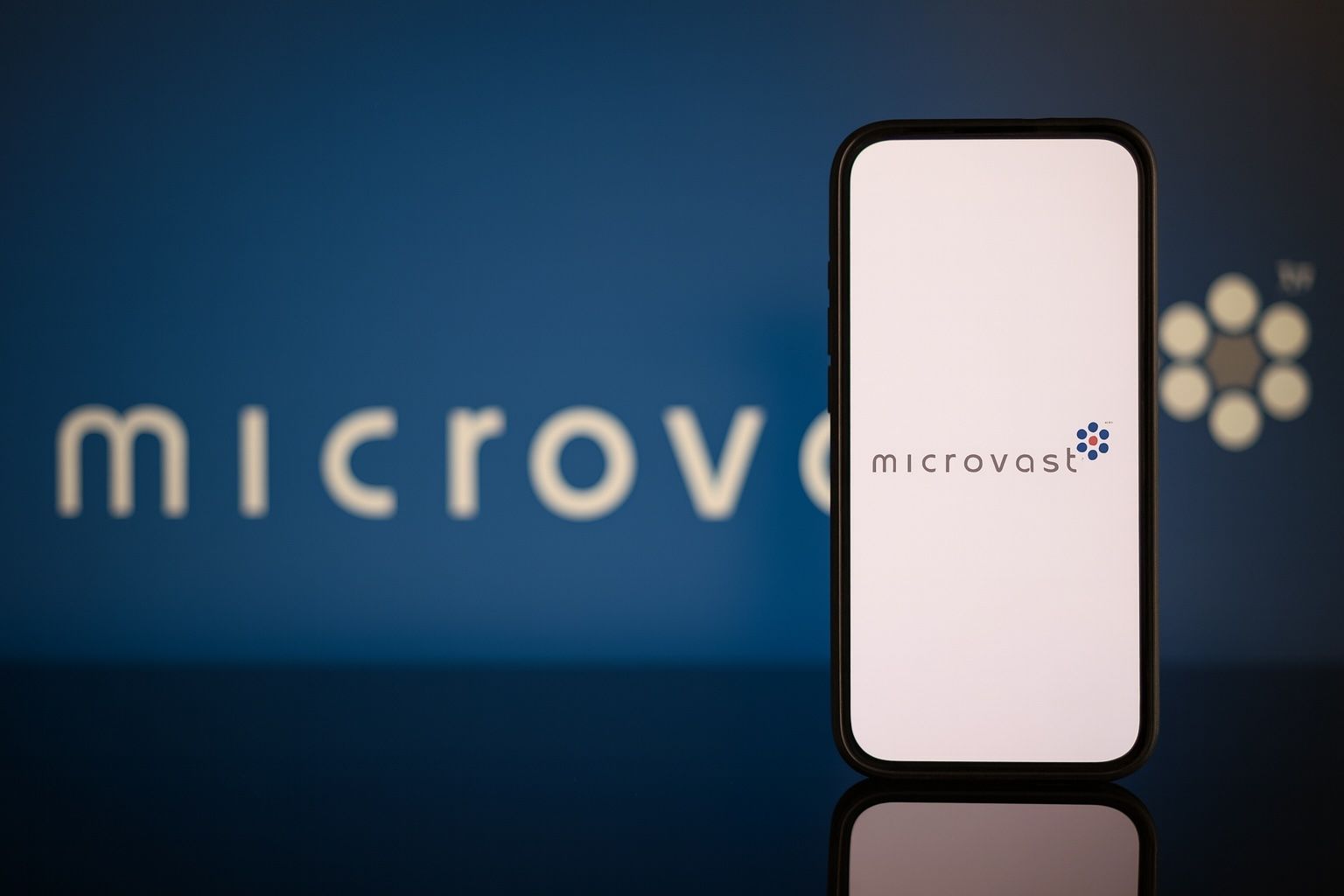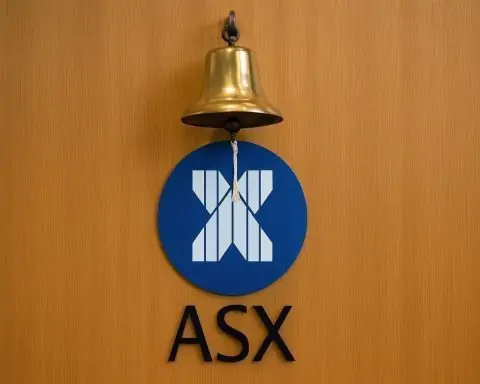- Stock Surge: Microvast Holdings (NASDAQ: MVST) surged to a 52-week high this week, trading as high as $6.42 on Oct. 16 and hovering near $6.25 mid-day [1]. The EV battery maker’s stock jumped +19% on Oct. 15 alone [2], and is up ≈119% year-to-date, vastly outperforming its industry (+44%) and the S&P 500 (+16%) [3]. Remarkably, shares have rocketed over 2,600% from penny-stock levels a year ago [4], underscoring extreme volatility.
- Fundraising Boost: On Oct. 3, Microvast announced plans for an up to $125 million at-the-market equity offering (via Cantor Fitzgerald and Needham) to raise fresh capital [5]. The company intends to use proceeds to pay down debt, bolster working capital, expand production capacity, and pursue strategic projects [6]. Investors greeted the cash infusion optimistically, viewing it as fuel for growth despite the dilution, which helped ignite the recent rally [7] [8].
- Battery Breakthroughs: Microvast has been showcasing next-gen battery technology that excited the market [9]. At recent industry expos, it unveiled fast-charging lithium-ion packs (reaching ~80% charge in 15–20 minutes with 8,000+ cycle life) aimed at electric mining trucks and heavy machinery [10]. The company also highlighted progress on all-solid-state batteries, using a unique bipolar stacking cell design [11] [12]. These innovations bolster Microvast’s image as an EV battery technology leader, drawing investor attention to its R&D prowess.
- Improving Financials: The company delivered record revenues in its latest quarter. Q2 2025 sales hit $91.3 million (↑9.2% YoY) with gross margins improving to ~34.7% [13]. Adjusted EBITDA turned positive at $25.9 million [14], and return on equity reached +10.3% [15], although net profit is still negative (–26.8% net margin) [16]. Microvast ended Q2 with ~$139 million in cash on hand [17] (before the new offering), and it reaffirmed full-year 2025 guidance of $450–475 M revenue (+18–25% YoY growth) with ~30–32% gross margin [18].
- Analyst Mixed Signals: Wall Street’s view on MVST is divided. Weiss Ratings recently slapped a “Sell (D–)” grade on Microvast [19], citing profitability concerns, while Zacks had upgraded it to “Strong Buy” earlier in mid-2025 [20] (though Zacks just downgraded it to Hold this week after the run-up [21]). Overall, only one analyst rates it a Buy, one Hold, and one Sell [22]. The consensus 12-month price target sits in the $5 range (around $5.10–$6.00) [23] [24] – below the current price – reflecting cautious expectations despite recent momentum.
- Outlook and Risks: Experts say Microvast’s outlook hinges on execution. The company is expanding production (nearing completion of a major Huzhou, China plant expansion and planning a new Tennessee facility) to meet rising EV and energy storage demand [25]. Analysts forecast sales to roughly double by 2026 and project Microvast turning profitable by ~2027 [26]. However, geopolitical risks cast a shadow: Microvast’s ties to China prompted the U.S. DOE to cancel a $200 M grant earlier this year [27], and new Chinese export curbs on battery tech could pose challenges [28]. With a high beta (~3.2) and fervent retail interest, MVST remains a high-risk, high-reward play – continued tech and revenue wins could extend the rally, but any missteps or policy headwinds might spark a pullback [29].
Stock Performance: Rally to Multi-Year Highs
Microvast’s stock price has seen a spectacular run-up in October, far outpacing the broader market as investors pile in on growth hopes. Volume spiked to nearly 20 million shares on Oct. 15, about three times the monthly average, reflecting surging interest.
Microvast’s shares have been on a tear, skyrocketing in mid-October to levels not seen in years. The stock broke out of its recent trading range last week – it was around $4.33 on Oct. 10, then $5.25 by Oct. 14 [30] – before exploding ~19% higher on Oct. 15 to close around $6.25 [31]. Early on Oct. 16, MVST hit an intraday high of $6.42 before stabilizing near $6.25 by midday [32]. This marks a fresh 1-year high (and roughly a 3½-year peak) for the volatile small-cap.
The trading volume behind the rally has been extraordinary. About 19.7 million shares traded on Oct. 15 [33] – roughly triple Microvast’s typical daily volume of ~8 million [34]. Heavy buying continued into Oct. 16, suggesting strong momentum and possibly institutional interest. Indeed, MVST decisively broke above its 50-day (~$3.35) and 200-day (~$3.11) moving averages during this surge [35], a bullish technical signal that attracted trend-following traders. The stock’s beta is ~3.2 [36], indicating it swings more than three times as sharply as the overall market – and lately those swings have been to the upside.
Retail investors have also jumped on the bandwagon. MVST became one of the top trending tickers on social platforms like Stocktwits this week [37], with sentiment indicators flipping to “extremely bullish.” On Oct. 15, Microvast was the third-most discussed equity on Stocktwits as users cheered the run-up [38]. Message volumes about the stock surged nearly 700% over the past month [39]. This buzz underscores how trader enthusiasm and a fear of missing out (FOMO) may be amplifying the rally beyond just fundamentals.
In a broader context, Microvast’s ascent has been staggering. Year-to-date the stock has climbed roughly +182% [40], vastly outpacing major indexes. Even more eye-popping – MVST has gained over +2,600% in the last 12 months [41], given it traded in penny-stock territory (~$0.15) late last year. Such exponential gains reflect both turnaround optimism and the math of bouncing off a very low base. They also highlight the risks: at these levels the stock is prone to sharp corrections. Notably, after the latest spike, Microvast’s market capitalization now exceeds $2 billion [42], a dramatic jump for a company that was valued under $100 million at its nadir. This run-up sets the stage for the key question: what’s fueling the optimism, and can Microvast deliver on the market’s lofty hopes?
Recent Catalysts: Funding & Battery Tech Buzz
Several major news catalysts in recent weeks have underpinned Microvast’s sudden rise. First and foremost was the company’s decision to bolster its balance sheet with fresh equity. On October 3, Microvast announced an at-the-market offering up to $125 million in new shares [43]. The move, executed through brokers at Cantor Fitzgerald and Needham, gives Microvast the flexibility to sell shares gradually into the market. According to the announcement, the proceeds will be used for “general corporate purposes” – including debt reduction, working capital, capacity expansion, and potential acquisitions [44]. In other words, Microvast is raising cash to scale up production and R&D at a critical time in its growth.
Normally, news of share dilution can pressure a stock, and indeed MVST initially wobbled on the financing news. However, investors have since embraced the capital raise as a necessary step to fund growth. Market commentators noted that the additional liquidity eases short-term cash concerns and enables Microvast to speed up projects like new factories [45] [46]. One analysis even observed that Microvast “surged 21% after a $125 M equity raise to scale production and develop all-solid-state batteries” [47] – a sign that shareholders viewed the cash infusion as a bullish catalyst, despite the dilution. The stock’s big jump on Oct. 15 came about two weeks after the ATM offering news, suggesting that as the dust settled, investors refocused on the growth opportunities the funding unlocks.
The second key catalyst has been Microvast’s stream of battery technology breakthroughs and the buzz around them. In late September, the company made waves at the BICES 2025 construction machinery expo in Beijing by unveiling a suite of advanced battery cells and packs. These included new fast-charging battery packs – for example, Microvast’s HpTO, MpCO, and HpCO series – that can charge to ~80% in 15–20 minutes and last over 8,000 cycles [48]. Such long-life, rapid-charge batteries are a game-changer for commercial EVs like mining trucks, buses, and industrial equipment, where downtime for charging must be minimized. Microvast also introduced high-energy-density cells (up to ~295 Wh/kg) in its HnSO and HnCO product lines [49], which cater to applications needing maximum range or storage capacity. These innovations underscore Microvast’s role as a cutting-edge battery supplier, and they came at an ideal time to stoke investor excitement.
Crucially, Microvast has not only improved today’s lithium-ion tech but is also pushing toward next-generation batteries. The company highlighted its progress on all-solid-state batteries (ASSBs) at recent industry conferences [50]. Notably, Microvast’s solid-state design utilizes a bipolar stacking architecture (internal series connections inside a cell) to boost efficiency [51]. Solid-state batteries are considered a “holy grail” in the EV world – promising higher energy density and safety by replacing flammable liquid electrolyte with solid material. While still in development, Microvast’s claims of an ASSB “breakthrough” signal to investors that it aims to stay at the forefront of battery innovation. Simply Wall St reported that Microvast “highlighted its advancements in all-solid-state technology” just as it filed the equity offering [52], linking the funding to its R&D ambitions.
Adding to the fervor, an external development in early October gave Microvast an unexpected boost: China’s new export restrictions on battery materials. In a move reported by Reuters, Beijing will require special export licenses (starting Nov. 8, 2025) for advanced lithium batteries, materials like graphite anodes, and related tech [53]. This policy, aimed at protecting China’s tech lead, could tighten global battery supply. Traders have interpreted it as potentially beneficial for non-Chinese battery producers or those with international operations [54]. Microvast, though headquartered in the U.S., has significant manufacturing in China – so it straddles this line. Nevertheless, the stock got a sentiment lift from the news, as evidenced by social media buzz that “China’s curbs” would increase demand for Microvast’s products [55]. This narrative of Microvast being a “safer” non-Chinese source (despite its China ties) may be optimistic, but it contributed to the buying momentum.
In short, a confluence of factors – new funding, new tech, and favorable market dynamics – propelled Microvast’s stock higher in recent days. The company has adeptly positioned itself in headlines as both financially strengthened and technologically on the cutting edge, a combination that lit a fire under the share price.
Financial Performance and Business Outlook
Microvast’s latest financial results and guidance provide important context for the stock’s surge. In Q2 2025, the company delivered its strongest quarter ever, signaling that operational execution is improving. Revenue hit $91.3 million (a quarterly record, up 9.2% year-over-year) [56], driven by robust sales of EV batteries and energy storage systems. More impressively, gross margin expanded to 34.7% [57] from ~32.5% a year prior, indicating better cost control and pricing power as production scales. CEO Yang Wu lauded it as a “record second quarter” with both revenue and margins reaching new highs [58], underscoring growing demand for Microvast’s products alongside improved manufacturing efficiency.
The bottom line is also moving in the right direction. While Microvast remains unprofitable on a GAAP basis, its Q2 net loss narrowed and certain metrics turned positive. The company achieved adjusted EBITDA of +$25.9 M in Q2 [59], a notable milestone after years of losses, thanks to higher sales and margins. It even reported a small earnings per share beat: $0.05 EPS for the quarter vs. a $0.01 consensus estimate [60] (likely reflecting one-time gains or favorable accounting, as net margin was still –26.8% [61]). Return on equity swung to a positive +10.3% [62], showing that recent investments are starting to yield returns. Meanwhile, the balance sheet was in decent shape: Microvast had $138.8 M in cash as of Q2 [63], and a manageable debt-to-equity ratio of ~0.21 [64]. This cash buffer, now bolstered by the new share offering, provides a runway to fund expansion without over-leveraging the company.
Looking ahead, Microvast’s management remains bullish on growth. The company reaffirmed its full-year 2025 revenue guidance of $450–475 million [65], which would mark roughly 20% growth over 2024. It also projected a full-year gross margin around 30–32%, up from ~27% last year, indicating expected efficiency gains as volumes rise [66]. These targets suggest a strong second half of 2025 in progress. To meet them, Microvast will rely on its growing order backlog and new production capacity coming online. The company is in the midst of a major capacity expansion at its Huzhou, China facility (Phase 3.2), slated to complete by year-end [67]. Once finished, this plant expansion will roughly double Microvast’s cell manufacturing capacity [68], which should further reduce unit costs and support higher margins in 2026 and beyond. Microvast is also constructing a new factory in Clarksville, Tennessee, targeting U.S. EV and defense markets, though a portion of that plan was tied to a now-canceled federal grant (more on that later).
Another indicator of Microvast’s momentum is its expanding partnership and customer roster. Over nearly two decades in the industry, Microvast has deployed over 31,000 battery systems across 34 countries [69]. It has secured a number of high-profile collaborations, signaling confidence from established players in its technology. For instance, Oshkosh Corporation, a leading specialty truck maker, became a strategic investor in Microvast during its SPAC merger and entered a joint development agreement to integrate Microvast’s batteries into Oshkosh vehicles [70]. In Europe, bus manufacturer SAFRA uses Microvast batteries for its electric and hybrid buses [71]. Microvast is also the battery supplier for REE Automotive’s next-gen EV platforms and for French innovator Gaussin’s electric trucks – the Gaussin deal alone forecasts a volume of 1.5 GWh over five years, scaling to 29 GWh by 2031 [72]. Even niche segments like marine electrification are on Microvast’s radar: Norway’s Evoy is integrating Microvast battery packs into high-performance electric boats [73]. These partnerships underscore Microvast’s strategy to attack various transport and energy niches (buses, trucks, marine, off-road) where its diverse battery chemistries (LFP, NMC, LTO) can be tailored to different needs [74] [75]. They also provide a pipeline of future revenue as these customers scale up their electrification programs.
Despite these positives, Microvast is still in build-out mode and faces challenges on the path to sustained profitability. The company’s free cash flow is likely still negative given ongoing capital expenditures for new plants. Its current ratio of 0.83 and quick ratio of 0.56 [76] (as of Q2) indicate a reliance on external financing to comfortably meet short-term obligations – hence the importance of the recent $125 M raise. Moreover, Microvast operates in a highly competitive arena dominated by much larger players (the “Goliaths” in EV batteries include CATL, LG Energy, Panasonic, BYD, etc.). Microvast’s ability to carve out a profitable slice of the market will depend on continuing to innovate and perhaps finding protected niches or partnerships that the giants have overlooked. So far, its focus on commercial and specialty vehicles and energy storage, rather than mass-market passenger cars, has given it some room to compete as a specialist provider [77] [78]. The next few quarters will be critical to prove that the recent revenue growth and margin uptick are part of a sustainable trend – and not just a short-term spike due to a few large orders or subsidy boosts.
On the forecast horizon, analysts remain cautiously optimistic but realistic. Consensus projections compiled by Fintel and others see Microvast’s annual revenues roughly doubling by late 2026 compared to today [79]. For example, by Q4 2026, quarterly revenue is expected to reach ~$232 M (which annualizes to ~$928 M, about 2× 2025 levels) [80]. If Microvast executes on building its new factories and fulfilling its partnerships, these numbers imply it could surpass $0.9–1 billion in revenue by 2026, firmly moving out of startup territory. Profitability, however, is still a few years off in most models. Analysts forecast positive earnings per share by 2027, with one estimate around $0.09 EPS in Q4 2027 [81]. In the interim, for full-year 2025, the street expects Microvast to post a net loss (consensus around –$0.30 EPS for FY2025 [82]). The company’s trajectory – narrowing losses, then breakeven, then modest profits by 2027 – reflects the heavy investment phase it’s in. If those investments yield the efficiency gains and market share growth planned, Microvast could turn the corner to profitability on schedule. But if sales ramp slower or new factories run into delays, the company may need to tap more capital or face cash crunches. Thus, Microvast’s business outlook is one of high growth potential tempered by execution risks.
Analyst & Expert Opinions
Microvast’s wild ride has left financial analysts divided on its merits, and their commentary strikes a balance of enthusiasm and caution. On the bullish side, some see Microvast as a compelling growth story in the clean tech boom. Earlier this year, Zacks Investment Research highlighted Microvast as a “Bull of the Day,” noting its fast revenue growth (projected +23% for 2025) and calling it a “little battery maker… making a huge swing to profitability” [83]. At that time, with shares around $3, Zacks gave Microvast a #1 Strong Buy rating, impressed by forecasts that sales would cross $600 M in 2026 and earnings could nearly double (to ~$0.24) the following year [84]. Another Zacks analyst recently pointed out that Microvast’s 119% YTD share price jump far outpaced its peers and “indicates strong market confidence” in its prospects [85]. This positive sentiment has been echoed by momentum investors who view Microvast’s multi-bagger rally as a sign of genuine turnaround momentum in play.
Company executives also project confidence. CEO Yang Wu has repeatedly emphasized Microvast’s momentum. “We delivered a record second quarter… with revenue reaching $91.3 million [and] gross margin expansion to 34.7%,” Wu said, framing it as proof of “growing demand” and improved efficiency [86]. He and his team highlight that Microvast’s broad battery lineup (LTO, LFP, NMC chemistries) and vertical integration (the company makes its own cathodes, anodes, electrolyte and separator) give it a competitive edge in addressing various market needs [87] [88]. Management’s narrative is that Microvast is now hitting its stride after years of R&D – pointing to achievements like positive EBITDA, a swelling backlog, and high-profile partnerships as evidence that the business model is scaling successfully.
Not everyone on Wall Street is convinced, however. Bearish analysts warn that Microvast’s stock may have sprinted ahead of its fundamentals. Just this week, Zacks actually downgraded MVST to “Hold” from “Strong Buy” [89], likely a response to the huge price appreciation (it’s not uncommon for analysts to temper ratings after a stock overshoots their price targets). Weiss Ratings – an independent research firm – recently reaffirmed a “Sell” rating (grade D–) on Microvast [90]. Weiss and others with a skeptical view point to ongoing losses and the challenge of carving out profits in a competitive battery industry. They note that despite revenue gains, Microvast’s net margins are deeply negative and the company will need flawless execution to achieve the profit timeline it’s promising. Some also cite the stock’s speculative surge: with shares now trading at a rich valuation relative to current sales (MVST’s market cap is ~4 times this year’s revenue), any stumble could trigger a sharp correction.
MarketBeat’s analyst survey reflects this mixed sentiment, with 1 Buy, 1 Hold, and 1 Sell rating on the stock [91]. The average rating lands at a Hold. Importantly, the average price target is only ~$3.00 per share [92] according to MarketBeat – implying brokers, on average, think the stock could nearly halve from current levels. (Some targets may not have been updated post-rally, however, and Fintel’s compilation shows a median target around $5–6 [93].) In any case, there’s a clear gap between Microvast’s trading price and what many analysts deem its fair value, which signals caution.
Sector specialists also weigh the pros and cons. A TipRanks AI-based analysis summarized Microvast as “Neutral”, praising its “strong revenue growth and strategic advancements in technology” but flagging “ongoing profitability challenges” [94]. Similarly, investment research platform AInvest noted investors’ excitement about Microvast’s new funding and R&D focus, but bluntly warned that “geopolitical risks persist” [95]. Chief among those risks is Microvast’s link to China: in May 2025, the U.S. Department of Energy abruptly canceled a planned $200 M grant for Microvast amid political scrutiny of the company’s Chinese connections [96]. This incident, widely publicized, underscores the regulatory uncertainties facing Microvast. It had initially been selected (alongside General Motors) for the federal grant to build a battery separator plant in the U.S. [97], but opposition in Washington over funding a company with Chinese operations led to its rescindment. As a result, Microvast shelved plans for a big factory in Kentucky [98] and had to seek alternative financing (hence the recent equity raise). Analysts caution that such geopolitical headwinds – from U.S.-China trade tensions to China’s own export controls – could complicate Microvast’s growth or restrict its market access [99]. For instance, tighter U.S. investment rules on Chinese tech or Chinese limits on tech exports might force Microvast to reorganize its supply chain or manufacturing footprint in the future [100]. These unknowns make some analysts hesitant, despite the company’s technological strengths.
In sum, expert opinions on Microvast span the spectrum. The bulls see a high-growth disruptor with unique tech, fresh capital, and improving financial metrics – essentially a small-cap “David” taking on the Goliaths of the battery world with success [101]. The bears see an overextended stock price, heavy reliance on future perfection, and external risks that are hard to control. This split verdict suggests that prospective investors should carefully weigh both Microvast’s immense opportunity in the EV revolution and the substantial risks that accompany it.
Conclusion and Outlook: High-Power Potential, High Volatility
Microvast’s recent surge embodies the market’s hopes for the company: it has powerful tailwinds at its back, from the EV battery boom to newfound financial firepower and headline-grabbing tech breakthroughs. The stock’s momentum indicates that many investors believe Microvast could be a major player in next-generation batteries, and they don’t want to miss out. The company is riding a wave of positive developments – record revenue, expanding margins, a war chest of new capital, and products that seem to be hitting the sweet spot of fast-charging and long-life performance. In the near term, these strengths could continue to fuel investor enthusiasm. Traders are betting that Microvast’s story only gets better from here, and technically, the stock remains in an uptrend as long as it stays above key levels (watch for it to hold above the $6 mark and build support).
However, Microvast is by no means a sure thing, and clear challenges remain. The current share price is well above what most analysts expected [102], so any hiccup – an earnings miss, a delay in ramping a new factory, or broader market jitters – could trigger profit-taking. Given the stock’s high volatility (β > 3) [103], sharp swings will likely persist. For long-term investors, the central question is whether Microvast can successfully scale up from a niche supplier into a profitable mid-sized battery manufacturer in the next couple of years. That will require flawless execution: completing new production lines on time, converting pipeline deals into steady revenue, and navigating geopolitical cross-currents without losing access to key markets or materials.
The good news is that Microvast has put itself in a position to succeed. The $125 M cash infusion extends its runway and signals confidence in its growth plans. Its technology – spanning lithium iron phosphate, lithium titanate, nickel cobalt manganese, and possibly solid-state – gives it multiple shots on goal in the rapidly diversifying battery market [104]. Industry trends like the shift to electrify commercial fleets, build grid storage, and improve battery safety all play to Microvast’s strengths. If the company can continue delivering quarter after quarter of revenue growth (hopefully beating the conservative forecasts) and edge toward breakeven, it could justify the market’s optimism.
On the other hand, risks like U.S.-China tensions are not going away. Microvast will need to maintain transparency and perhaps bolster its U.S. footprint to allay political concerns. Also, competition isn’t standing still – giants like CATL and LG are investing heavily in similar fast-charge and solid-state technologies. Microvast must leverage its head start in certain niches and partnerships to stay ahead.
For now, Microvast has the market’s attention as a bold upstart in the EV battery race. The next few earnings reports and project updates will be crucial in determining whether this stock’s electrifying run can sustain itself. As one analyst aptly put it, Microvast at $6+ is a “high-risk, high-reward” proposition [105]. Investors have been handsomely rewarded so far in 2025 – but they’ll be watching closely to see if the company’s execution in 2026 and beyond can live up to the hype-fueled charge that’s now powering MVST stock.
Sources: Recent Microvast press releases (financial results, product announcements) [106] [107]; ts² TechStock analysis [108] [109]; Stocktwits news coverage [110] [111]; MarketBeat and Yahoo Finance data [112] [113]; Zacks Investment Research commentary [114]; Bloomberg/AInvest reports on regulatory developments [115].
References
1. www.marketbeat.com, 2. ts2.tech, 3. tickernerd.com, 4. stocktwits.com, 5. stocktwits.com, 6. stocktwits.com, 7. ts2.tech, 8. ts2.tech, 9. ts2.tech, 10. ts2.tech, 11. stocktwits.com, 12. ts2.tech, 13. ts2.tech, 14. ts2.tech, 15. www.marketbeat.com, 16. www.marketbeat.com, 17. ts2.tech, 18. ts2.tech, 19. ts2.tech, 20. ts2.tech, 21. www.marketbeat.com, 22. www.marketbeat.com, 23. ts2.tech, 24. ts2.tech, 25. ts2.tech, 26. ts2.tech, 27. ts2.tech, 28. ts2.tech, 29. ts2.tech, 30. ts2.tech, 31. ts2.tech, 32. www.marketbeat.com, 33. ts2.tech, 34. ts2.tech, 35. ts2.tech, 36. ts2.tech, 37. stocktwits.com, 38. stocktwits.com, 39. stocktwits.com, 40. stocktwits.com, 41. stocktwits.com, 42. www.marketbeat.com, 43. stocktwits.com, 44. stocktwits.com, 45. ts2.tech, 46. ts2.tech, 47. ts2.tech, 48. ts2.tech, 49. ts2.tech, 50. ts2.tech, 51. stocktwits.com, 52. ts2.tech, 53. stocktwits.com, 54. stocktwits.com, 55. stocktwits.com, 56. ts2.tech, 57. ts2.tech, 58. ts2.tech, 59. ts2.tech, 60. www.marketbeat.com, 61. www.marketbeat.com, 62. www.marketbeat.com, 63. ts2.tech, 64. ts2.tech, 65. ts2.tech, 66. ts2.tech, 67. ts2.tech, 68. ts2.tech, 69. www.nasdaq.com, 70. www.nasdaq.com, 71. www.nasdaq.com, 72. www.nasdaq.com, 73. www.nasdaq.com, 74. www.nasdaq.com, 75. www.nasdaq.com, 76. www.marketbeat.com, 77. www.nasdaq.com, 78. www.nasdaq.com, 79. ts2.tech, 80. ts2.tech, 81. ts2.tech, 82. www.marketbeat.com, 83. www.nasdaq.com, 84. www.nasdaq.com, 85. tickernerd.com, 86. ts2.tech, 87. www.nasdaq.com, 88. www.nasdaq.com, 89. www.marketbeat.com, 90. ts2.tech, 91. www.marketbeat.com, 92. www.marketbeat.com, 93. ts2.tech, 94. ts2.tech, 95. ts2.tech, 96. ts2.tech, 97. www.nasdaq.com, 98. news.bloomberglaw.com, 99. ts2.tech, 100. ts2.tech, 101. www.nasdaq.com, 102. www.marketbeat.com, 103. ts2.tech, 104. www.nasdaq.com, 105. ts2.tech, 106. ts2.tech, 107. ts2.tech, 108. ts2.tech, 109. ts2.tech, 110. stocktwits.com, 111. stocktwits.com, 112. www.marketbeat.com, 113. www.marketbeat.com, 114. tickernerd.com, 115. ts2.tech








